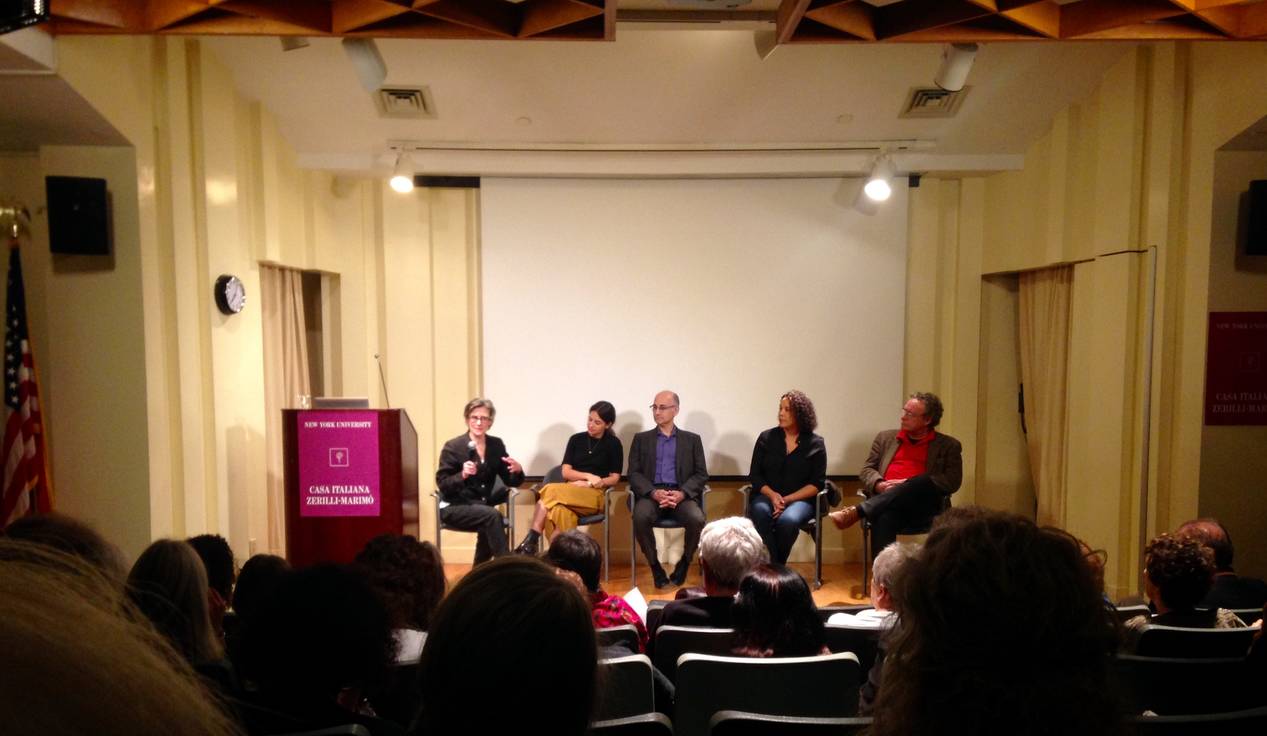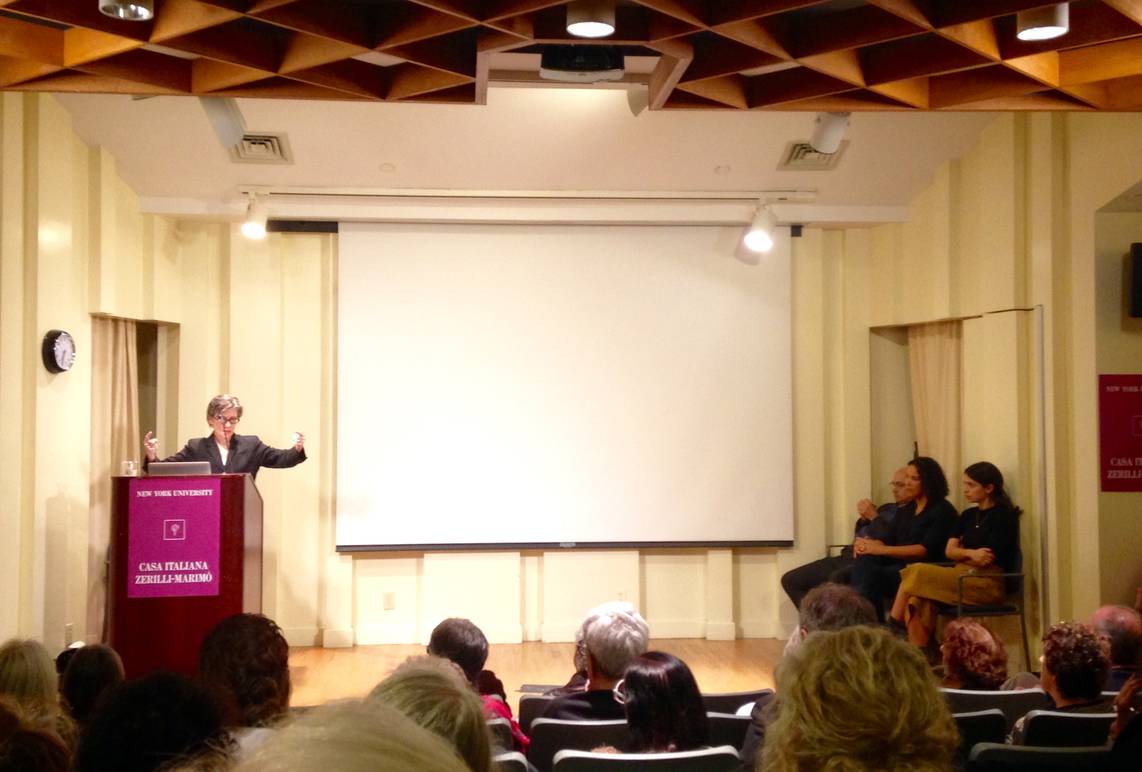Compagnia de’ Colombari Performs Shakespeare's "The Merchant in Venice" in Jewish Ghetto
On October 6, 2016, Casa Italiana had the pleasure of hosting members of Compagnia de’ Colombari, an Italian theater company known for its unorthodox production locations. The founder, Karin Coonrod, a current member of the theater faculty at Yale University, along with three cast members represented William Shakespeare's The Merchant in Venice, which they staged in the Venetian Jewish Ghetto for the first time in history in 2015.
This production began with a conversation between two professors in 2013 when they realized both the 500th anniversary of the foundation of the ghetto and the 400th anniversary of Shakespeare’s death fall on a similar date. They called upon Compagnia de’ Colobari knowing that they would be able to properly execute their vision, encompassing the history of the ghetto and revealing the true meaning of the play.
The cast was comprised of selected members of the Bogliasco Foundation, an international coorporation for gifted artists. Conrood explains that the culmination of nationalities of the cast created an openness and curiosity for culture that was taken advantage of in the play, as she incorporated songs and lines in languages other than English.
Coonrod addressed that historically The Merchant of Venice is known as anti-Semitist but intended to gear her rendition towards being both Jewish and universal, focusing on the marginalization of the people in the ghetto. “It frames both anti-Semitism and anti-others. What drew me to the play is the hypocrisy of the dominant culture with the exposure of what the play is leading to,” Coonrod explained. By highlighting the discrimination of the Jewish people by Christians, she tributes her work as a healing of the ghetto.
Shylock, the lead of the play and one of Shakespeare’s most noteworthy antagonists, is a historically controversial character due to the debate as to whether Shakespeare is creating a mockery of Jewish stereotypes or not. In Conrood's portrayal, she has him played by five seperate actors, which not only speaks volumes to embracing the cast's diverse personalities, nationalities, and ages, but also to the complexity of the different sides of the Shylock himself, providing a deep character analysis and eliminating previous connotations.
The costumes were visionary; Coonrod described them as “Renaissance with modern details” and the Ghetto provided the perfect stage. When the actors explained their first impression of the ghetto they said that they never could have imaged the vast space, filled with growing trees and babbling foundatins, to act as a stage. When the metamorphosis was complete and the equipment crew added 200 seats for an audience, bright back lighting, and props, the ghetto transformed into a set. The background was flanked by the Italian and German Synagogues to create the perfect atmosphere for this multifaceted play.
There was, of course, a high level of responsibility to find the means of both a manifestation of the culture of the ghetto and demonstrating it properly in history, while figuring out how to bridge the centuries to the exact location. And suffice to say, the challenges did not end here.
As aforementioned, the actors and actresses came from diverse language backgrounds, with a Shakespearean play there is a profound significance on the vernacular, poetry, and words. Coonrod had to work with the system of languages and create a complete connection of action, movement, music, and sounds into one performance. As a native English speaker struggles with the Shakespearian dialect, one could only imagine a foreign speaker working with such words. Thanks to Coonrod’s truly sophisticated perception, she was able to execute a successful plot that incorpated several languages that ultimately added to the intensity of the production, though performed mostly in English.
During the panel with the actors and director, they playfully reminisced on the various obstacles they overcame to properly carry out the play. For example, the Jewish ghetto is technically “an island within an island,” all set pieces, props, and people had to be boated in. But after six successful performances in the ghetto the extra effort was worth it and they packed up and headed to Mezzano to perform a matinee in the central campo with beautiful acoustics. Their final perfomance was held in an Italian prison, the actress that played Protia reminisced, “they felt seen and we felt seen in a way that actors and prisoners have never been seen before. There was an understanding between everyone. It was our last show and it was really special.”
The work of Compagnia de’ Colombari pushes the limits of theatrics by using the world as a stage. Karin Coonrod and the members of the Bogliasco Foundation took on a great challenge of hosting this play in the Jewish Ghetto, but with a full audience, beautiful orchestra, incredible actors, and a deeply intellegent and innovative director the play was a success.
That’s a wrap!



































i-Italy
Facebook
Google+
This work may not be reproduced, in whole or in part, without prior written permission.
Questo lavoro non può essere riprodotto, in tutto o in parte, senza permesso scritto.